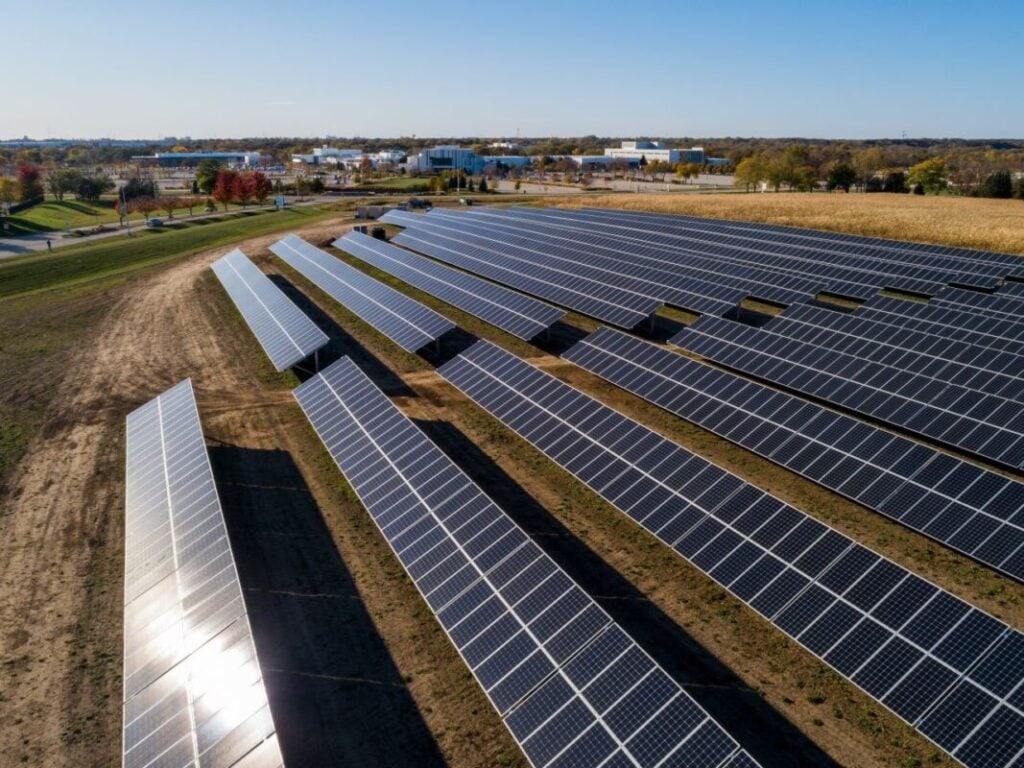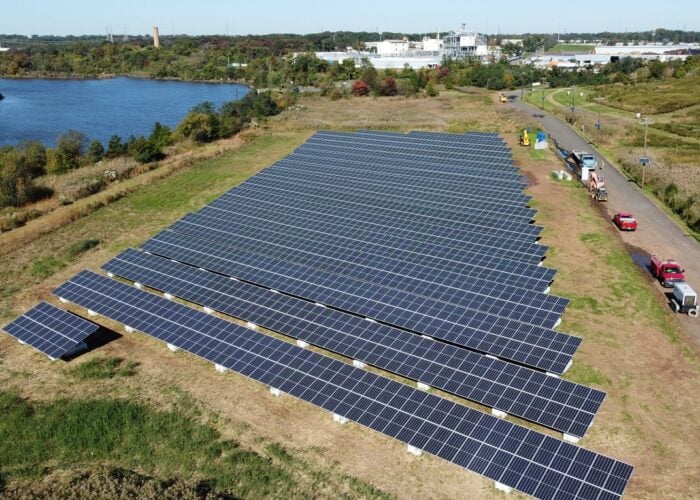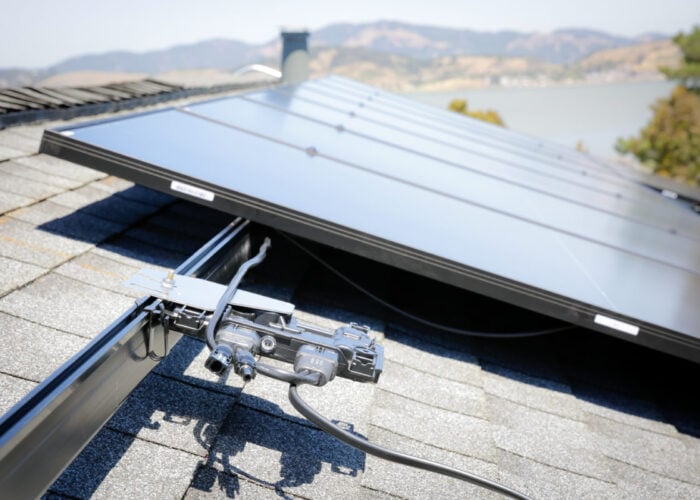
Previously PV Tech Premium covered that investor appetite in the community solar segment had seen increased interest. Also increasingly looking into the community solar market is the corporate world, with the likes of retail giant Walmart investing in several community solar projects across the US.
“One thing that’s really big in community solar is corporate interest right now. Walmart has started investing in these portfolios. Corporations are starting to actually be the owners of these assets. One of the things that is going to happen over the next five years, is there’s going to be a huge surge in community [solar] in the real estate world,” says Nate Owen, CEO at Ampion, a community solar management company.
Unlock unlimited access for 12 whole months of distinctive global analysis
Photovoltaics International is now included.
- Regular insight and analysis of the industry’s biggest developments
- In-depth interviews with the industry’s leading figures
- Unlimited digital access to the PV Tech Power journal catalogue
- Unlimited digital access to the Photovoltaics International journal catalogue
- Access to more than 1,000 technical papers
- Discounts on Solar Media’s portfolio of events, in-person and virtual
Or continue reading this article for free
The advantage for big corporations such as Walmart, or even tech companies which have been building their renewables portfolios – mostly through power purchase agreements – is that there is more than one route to get involved in community solar projects.
“The exciting part is that there are a number of ways for these large C&I (commercial and industrial) customers to participate in community solar projects,” says Jeff Cramer, president and CEO of the Coalition for Community Solar Access (CCSA).
That interest from the corporate world, can come from three different fronts, explains Mat Elmore, SVP of strategic accounts at community solar developer Pivot Energy, explains that the corporate world can be involved in community solar in three different ways: offtake, real estate/lenders and tax equity or tax credit investment.
Three routes for corporations to participate in community solar
The first one of these ways for corporations to participate in community solar projects is through an offtake agreement. “That can look like a few different things, depending on the state and the programme. In general, that’s buying or subscribing to a community solar array for the corporation’s facilities,” says Elmore. He adds that the benefit of an offtake is it enables support for local renewable energy development.
Intertwined with the offtake arrangement but not compulsory, the second option would put corporations as a sort of real estate entity that lends its space for a community solar developer to build a solar array on the rooftop of the corporation’s facilities, for instance. Elmore says that this option is less common than an offtake agreement and allows a company to either just host a community solar project without owning it and, on top of that, subscribe to that project as an offtaker.
“That’s a growing interest, especially if they can’t do on-site solar for some other reason or they have more space than they need for behind-the-meter solar,” adds Elmore.
One of the advantages of these two options is the location of the projects, which could be either sited at the same place as where a company operates or near its facilities.
“The reason [corporations] like community solar is because the sites are located next to their facilities. They provide benefits to their staff, their employees and their business partners in the area,” says Owen.
Cramer says that there is a “great promise” in community solar’s ability to attract commercial and industrial (C&I) customers in the community solar scene. These corporations have a significant appetite or access to renewable energy either for their own internal or ESG goals and can serve as financiers or tenants for these community solar projects, adds Cramer.
“They can then be catalysts for those projects to be created and provide savings in access to low-income households. All while decarbonizing the grid,” adds Cramer.
Given the nature of the second option, it has its limitations as not every state currently has a community solar programme in place.
“It’s very much a market-by-market opportunity. There are very few states overall that have viable community solar programs. The majority in the United States do not,” says Elmore.
‘Community solar construct is very bankable’
Finally, the third option is to invest directly in these projects with either tax equity or tax credit, explains Elmore, adding that interest in tax credit investments has started to increase in the last year or so.
Owen explains that community solar is “very popular” because the projects are easier to build and finance than through other types of contract structures, adding: “The community solar construct is very bankable right now.”
Elmore explains that partnerships such as the one Pivot Energy made with Walmart earlier this year, allow the solar developer to build a portfolio of community solar at a larger scale of hundreds of megawatts. “We need partners who have the ability to make large investments in our projects.”
“Traditionally, we’ve gone through banks and most solar developers have done tax equity through banks. But because Walmart is one of the largest companies in the world, they have the ability to invest large amounts of money in our projects in ways that other corporations might not be able to just at the scale that we’re working on,” adds Elmore.
This third option overcomes the limitations of where a project is located and whether a given state has a community solar programme, explains Elmore.
“If you are a company in Florida, and you want to invest in community solar through tax credits, that doesn’t matter where your facilities are. You can benefit from tax credit investments anywhere, because that’s simply a financial transaction and not based on where your facilities are located,” adds Elmore.
So, there are several routes for C&I customers to be involved in community solar, a market that is expected to add 7.6GW of solar capacity between 2024 and 2028. The appetite for community solar does not seem to be going away soon, especially if more states end up implementing or improving a community solar programme in the coming years.
“There’s an insatiable appetite amongst the large customer community. For these assets, there’s going to be huge development of them, across corporate campuses, across every single warehouse and building. The economics are just too beneficial to ignore. We see massive deployment of community solar assets, rooftop, ground-mount, with accompanying batteries, and both on-site and off-site in the corporate segment,” concludes Owen.







